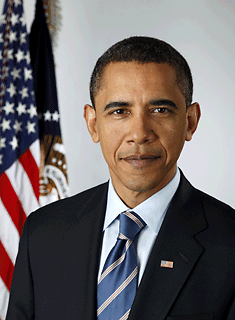November 1-7, 2012, Current Events Lesson Plan
Current Event:
Barack Obama, the 44th president of the United States and the first African American elected to that office, secured a second term in the White House on November 6 after a costly, closely fought battle against challenger Mitt Romney. In winning both the popular vote and the Electoral College, President Obama, a Democrat, overcame charges by his Republican opponent that his policies were unlikely to restore economic prosperity after the severe economic crisis of 2008-2009.

U.S. President Barack Obama won reelection with at least 303 votes in the Electoral College. (The White House)
Objective:
In defeating Mitt Romney, the president carried the swing states of Colorado, Iowa, New Hampshire, Ohio, Virginia, and Wisconsin. He also took Michigan and Minnesota. Romney won North Carolina and Indiana, which the president carried four years ago. The Behind the Headlines news story and related World Book articles explore how a president gets elected to office in the United States.
Words to Know:
• Barack Obama
• Democratic Party
• election
• Electoral College
• indirect election
• Joe Biden
• Mitt Romney
• Paul Ryan
• political party
• popular vote
• president of the United States
• Republican Party
Discussion Topics:
1. Ask your students if they know how the U.S. president gets elected. Then give them the list of italicized vocabulary words below that they can refer to as you explain the process.
On Election Day, in November, voters choose among presidential and vice presidential candidates from different political parties. The votes do not directly determine which candidate will become president. Instead, they determine which party’s electors will represent each state in the Electoral College. The Electoral College is a group of representatives that formally elects the president and vice president of the United States. Therefore, the U.S. presidential election is an indirect election. The voters of each state determine electors who represent them in the Electoral College. The electors, in turn, cast electoral votes on behalf of the states they represent. Electoral votes determine the outcome of the election.
2. The popular vote is different than the Electoral College. Ask your students what the difference is, and then explain to them that the popular vote is the number of votes cast from qualified voters, as opposed to those made by the Electoral College.
3. Use World Book’s Timelines feature to explore Obama’s history. Ask your students what they already knew about the president and what they may learn by exploring his timeline.


